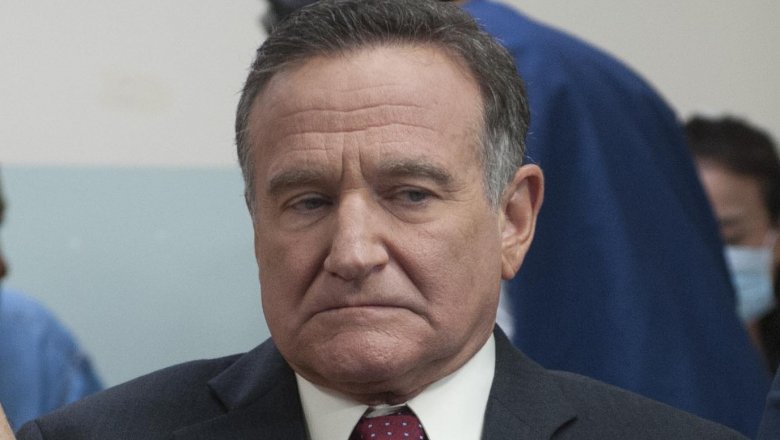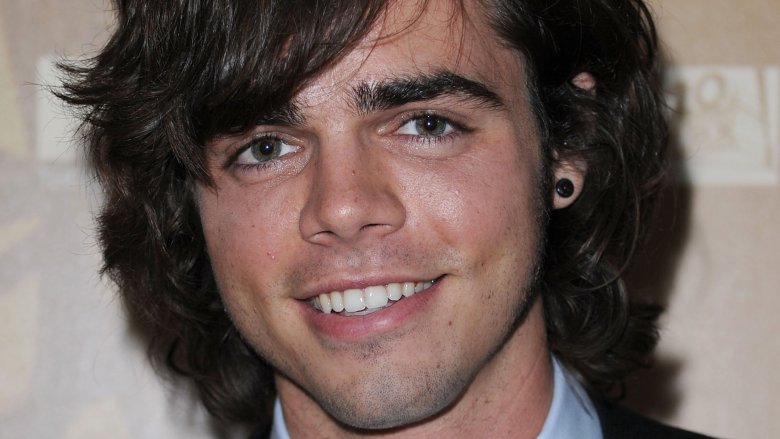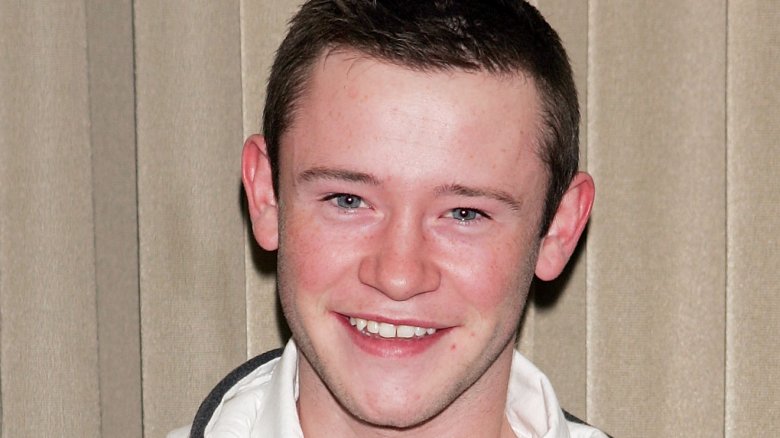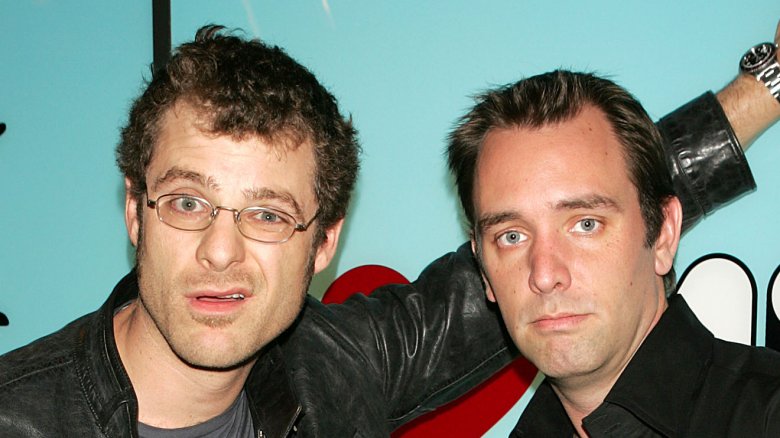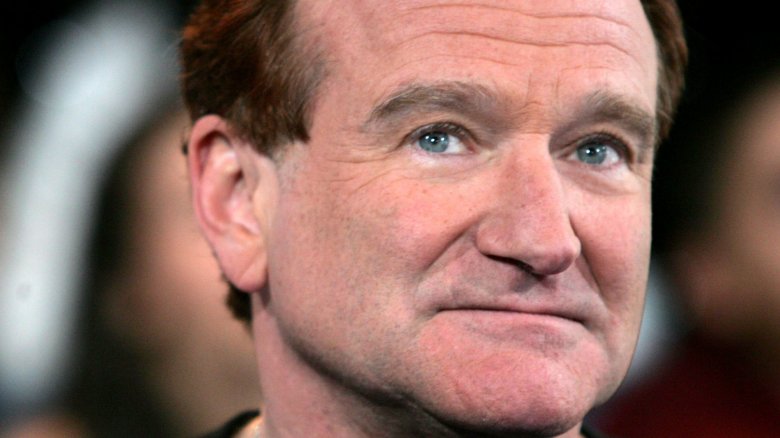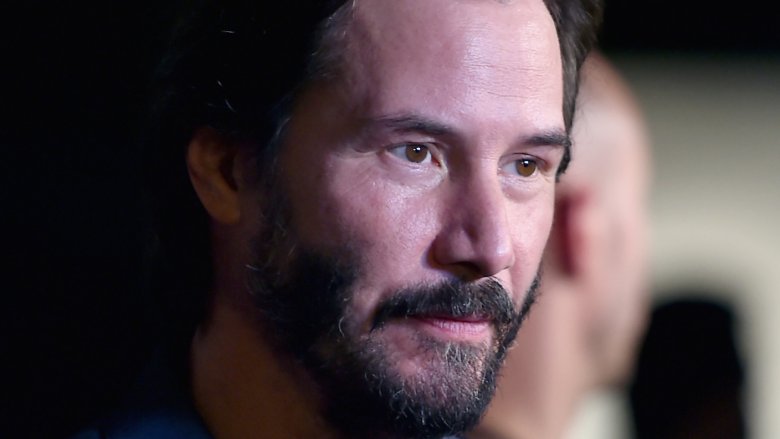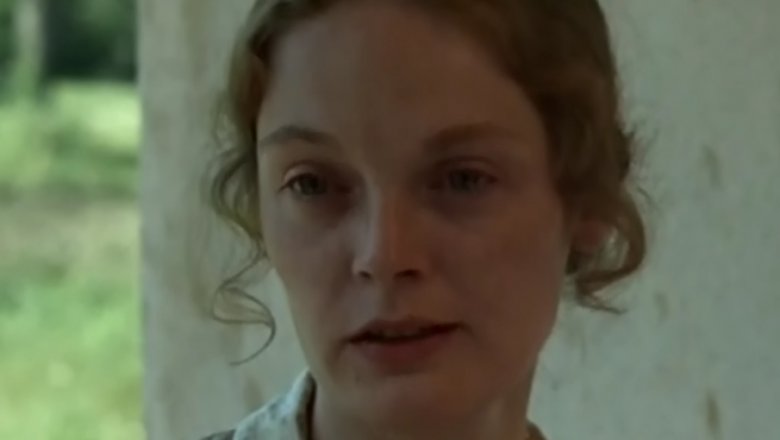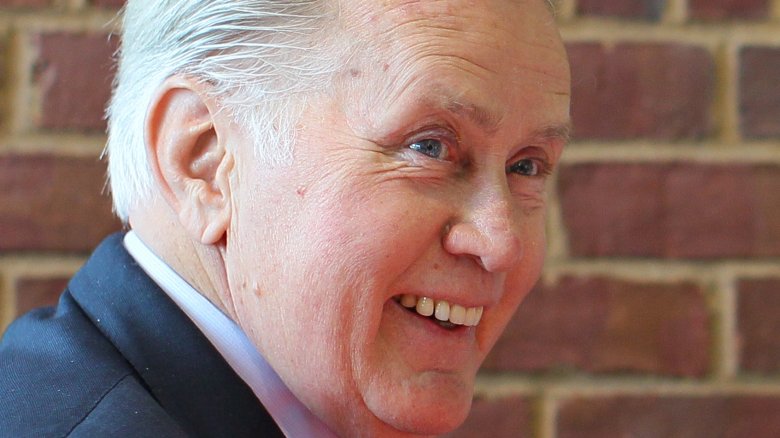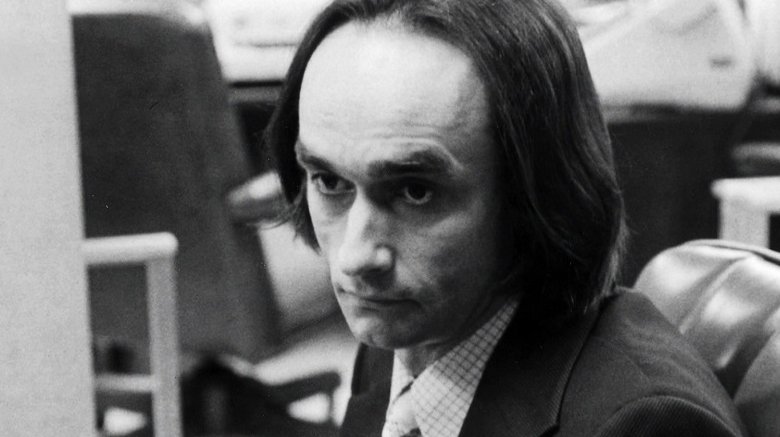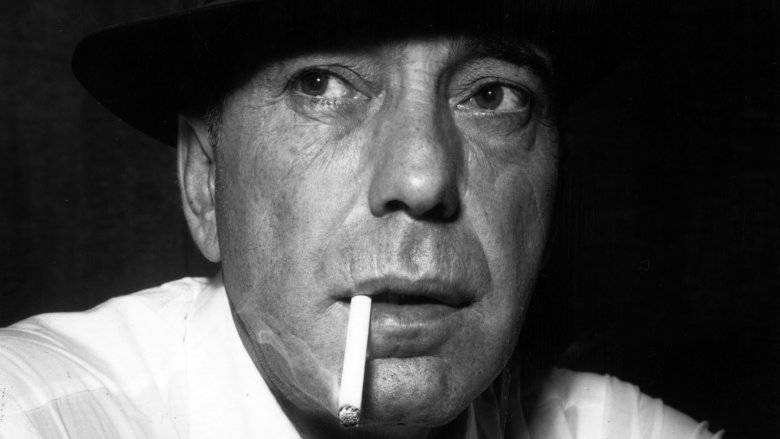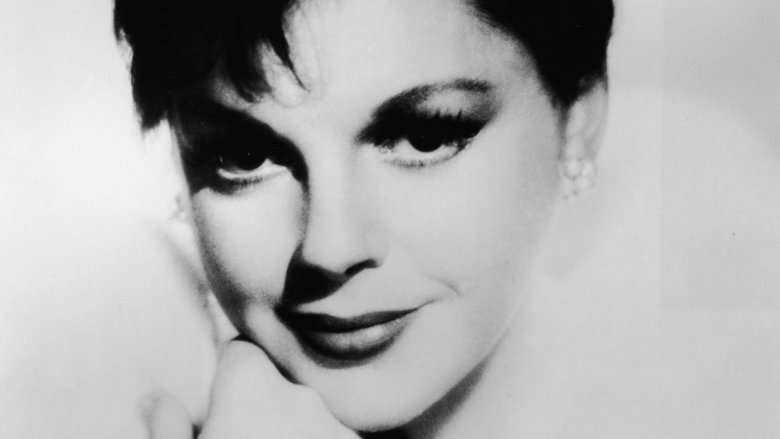Roles Actors Performed During Their Darkest Days
We all know how tough it can be to get through a standard work day when we're dealing with tough personal circumstances. The whole office isn't going to shut down for a month so you can deal with it—even if "it" is a particularly brutal event like the death of a loved one. The show must go on, as they say, and nobody knows this better than those who literally put on shows for us.
Aside from the fact that their profession requires a level of scrutiny very few people are equipped to deal with, psychologists have learned that creative people are especially prone to feelings of depression and alienation. This means many of your favorite actors may have dealt with dark nights of the soul while still showing up to work every day—only in their cases, the record is there for all to see.
Reid Ewing
Since 2009, Reid Ewing has made appearances on the ABC sitcom Modern Family as Haley's boyfriend Dylan. He landed the role at 21, at a time when he was deep into his struggles with what he now knows to be a condition called body dysmorphia disorder. Basically, since his early teens, the handsome actor hasn't been able to look in a mirror without seeing a horribly ugly person staring back.
Ewing went in for his first plastic surgery at the age of 19—cheek implants that he says ended up looking "so freaking weird." More procedures followed, each one causing a new perceived problem that Ewing felt could only be fixed by more surgery. Of his first few years with Modern Family, he says his struggle was "happening at the same time. I timed it out so I wasn't looking drastically different, so I wasn't showing, during filming. I took it very seriously, the job, and put a lot of effort and focus into trying to do it right."
Ewing sought help after experiencing suicidal depression in 2012, and with the help of therapy—and medication—he's come to understand his disorder while working as an advocate for those suffering from it. In an essay for the Huffington Post, he advised, "Before seeking to change your face, you should question whether it is your mind that needs fixing."
Devon Murray
Irish actor Devon Murray had the luck—or perhaps misfortune—of beginning his career with a role in one of the most beloved film franchises of all time. At 11 years old, he was cast as Seamus Finnegan in Harry Potter and the Sorcerer's Stone, a role he'd reprise in all eight films in the series. This might seem like a dream come true for any child actor, but the prolonged periods of separation from his friends and family in Ireland—year after year, for the remainder of his childhood—eventually took a toll on the young star.
In an interview with Irish National Broadcaster RTE, Murray elaborated: "I had to live in the U.K. for 11 years... that weighed on me. Me and my dad were so close growing up and then not to see him day in, day out. It was my 16th birthday and I was staying in this fantastic hotel suite over in London and my room was full of presents from everybody and I should have been happy but I wasn't."
Murray struggled with depression throughout and even after the conclusion of the Potter series, and says he very nearly committed suicide in early 2016. He sought help at the urging of family, and has since spoken publicly about his experiences.
Trey Parker and Matt Stone
Team America: World Police is perhaps Trey Parker and Matt Stone's greatest film, probably the best spot-on satire of American foreign policy and action movies, and hands-down the funniest film ever made with puppets. It's a pretty remarkable achievement, especially considering that it nearly destroyed the lives and partnership of its creators.
Speaking to the Sun before the film even opened, Stone put it bluntly: "It was the worst time of my entire life—I never want to see a puppet again... It ruined all the serious relationships in my life. You just become a different person... You feel like a piece of s**t, none of your friends like you, your parents don't like you, but you have a movie at the end."
Stone famously vowed to never make another movie with puppets or Parker again, so toxic was their working relationship on the film. South Park is still going strong over a decade later, but Stone has remained true to his word. The duo have never made another film, and even though the world is just screaming for a Team America sequel right about now, it's unlikely in the extreme that we'll get one.
Robin Williams
The late, great Robin Williams is a case study in how the funniest and most engaging people can harbor the darkest inner lives. The comedian and actor was saddled with depression for much of his career while working constantly, and ended his own life in 2014 at the age of 63. It's likely that evidence of Williams' struggles could be found in a great deal of his body of work, but the cinematographer who worked on one of his final films recognized that his performance was coming from a deep and tortured place.
Released the year of his death, The Angriest Man in Brooklyn tells the story of a perpetually raging bastard given 90 minutes to live after a brain aneurysm. At one point, the character goes on an extended rant about the meaninglessness and injustice of life, and cinematographer John Bailey was taken aback while lensing the scene. He called the little-seen performance a glimpse into the "Swiftian darkness of Robin's heart," and went so far as to call it his defining role.
Williams was a consummate professional who never let his private issues become public or affect his working relationships, which is part of what made his death so shocking. In his memory, we'd like to suggest that if you're struggling silently, help is waiting—call the National Suicide Prevention Lifeline at 800-273-8255.
Keanu Reeves
The death of River Phoenix by overdose in 1993 instantly cut short what was almost certain to be a long and important acting career. The 23-year old was the definition of a hot rising star, not to mention a prodigally gifted actor, and few friends of the actor were hit harder than Keanu Reeves.
Reeves, who had been close friends with Phoenix for years, was at work on the set of Speed when he received the news. Phoenix had developed his lethal drug addiction during the filming of the acclaimed Gus Van Sant film My Own Private Idaho, a role Reeves had persuaded the young actor to take. The production of Speed was nearly shut down completely, but restarted after a short break, with cast and crew alike giving Reeves plenty of space and consideration as he dealt with his grief.
Reeves is famously reluctant to talk about his personal life, and he's endured a ridiculous amount of tragedy over the years. He'll talk about his friendship with Phoenix and his qualities as an actor if asked, but interviewers can pry very little out of him on the subject of his friend's death.
Elizabeth Hartman
In 1965, 21-year old Elizabeth Hartman was nominated for a Best Actress Academy Award for her role opposite the great Sidney Poitier in the film Patch of Blue. For some, it would have been a fantastic start to a distinguished career; for Hartman, it was an unfortunately early highlight which she would never come close to matching. Problems with paranoia and anxiety plagued Hartman, and after roles in a few more films in the late '60s and early '70s, the offers simply dried up—and her already crippling anxiety turned to acute depression.
Her mental health issues claimed her marriage in 1981, and after living as a virtual recluse for years, she made one last attempt at a professional comeback in 1982, lending her voice to Mrs. Brisby in the Don Bluth animated classic The Secret of NIMH. Unfortunately, she never recovered; Hartman remained completely out of the public eye for the rest of her life, and committed suicide by jumping from the window of her fifth-floor apartment in June 1987.
Martin Sheen
The filming of Francis Ford Coppola's 1979 Vietnam War masterpiece Apocalypse Now was legendarily taxing on everybody involved. The constant setbacks, weather disruptions and logistical problems were likely made even more difficult by the insane drug-fueled partying that was taking place most of the time the cameras weren't rolling, and Coppola—hellbent on finishing the project—pushed cast and crew alike to their absolute limits. None more than star Martin Sheen.
Sheen was cast two weeks into production when original lead Harvey Keitel was fired, was dealing with some personal issues already, and arrived unprepared to deal with a director whose methods can qualify as borderline psychological abuse. For one infamous scene in a hotel room early in the film, Sheen was kept drunk for two days while being "coached" mercilessly by Coppola, according to one crew member: "He would tell Martin, 'You're evil. I want all the evil, the violence, the hatred in you to come out... (he) did a dangerous and terrible thing. He assumed the role of a psychiatrist... he put Martin in a place and didn't bring him back."
Sheen became sick and lost weight, and during a break from filming back in the U.S., he openly admitted to friends that he wasn't sure if he'd survive the shoot. He finished the film having had a heart attack and a nervous breakdown, and at one point was so ill that he was administered last rites by a local priest.
John Cazale
John Cazale came late to acting, appearing in his first film in his mid-30s. That film, however, was The Godfather, Coppola's other masterpiece, in which he portrayed Fredo Corleone. His next three roles also came in stone cold classics—Coppola's The Godfather Part II and The Conversation, and Sidney Lumet's Dog Day Afternoon—and it was his burgeoning reputation for bringing out the best in other actors that led Michael Cimino to cast Cazale in his ensemble drama The Deer Hunter.
Despite the grim psychological themes at play in the film, Cazale's health issue was physical rather than mental. Though at first most of the cast and crew were unaware—except Cimino and co-star (and fiancée) Meryl Streep—Cazale was suffering from terminal bone cancer for the duration of the film's shoot. Cimino hired the actor without letting the studio in on this, and flatly refused to recast the role when they found out. Instead, he managed to arrange for most of Cazale's scenes to be shot early in production to take advantage of what strength he had left.
Cazale died at 42 shortly before filming was completed. Despite performing it under a death sentence, he brought every ounce of his formidable talent to The Deer Hunter, capping off his too-short résumé with a fifth straight undisputed classic.
Humphrey Bogart
The man often referred to simply as "Bogie" was a prototypical leading man and a towering presence in early film. His career spanned four decades, and was of course the lead in what many consider to be the greatest film of all time. But unfortunately, he lived in a time when certain lifestyle dangers were not well understood, and he was also a founding member of the hard-drinking, chain-smoking Rat Pack.
During the production of his last film, 1956's The Harder They Fall, Bogart was nursing advanced terminal throat cancer. He gave a typically professional and understated performance despite being constantly worn out. Co-star Rod Steiger recalled: "I remember... seeing Bogie on the lot... he said, 'They want to shoot some retakes of my close-ups because my eyes are too watery.' A little while later, after the film, somebody came up to me with word of Bogie's death. Then it struck me. His eyes were watery because he was in pain with the cancer."
Bogart passed away shortly after the film's release at the age of 57, leaving behind a legacy few actors could ever hope to match. Sixty years after his death, he's still an icon.
Judy Garland
Judy Garland was already a veteran child actor by the time she won the role of Dorothy in The Wizard of Oz at 16—meaning, unfortunately, that she'd undergone a gauntlet of exploitation and abuse that makes the treatment of today's child stars seem like the pinnacle of ethics.
At the time of her casting, she had already developed a serious barbiturate and amphetamine problem due to the rigorous demands of her work schedule. She'd been force-fed diet pills for years, part of an ongoing battle with studio MGM over her appearance and weight. She'd been groped and fondled by studio heads, corseted to within an inch of her life to appear slimmer on camera, and on the set of Oz was sexually harassed by drunk Munchkins. Even MGM house director Charles Walters agreed that Garland's experiences at the studio probably damaged her emotionally forever, and Garland herself described her never-ending struggle with MGM as the thing she remembers most vividly about her childhood.
While The Wizard of Oz is a beloved classic and Garland is a pop culture and LGBT icon, she never overcame the dysfunction imprinted on her as a child by a brutal early Hollywood system. She was found dead in 1969 at the age of 47, after overdosing on barbiturates.
